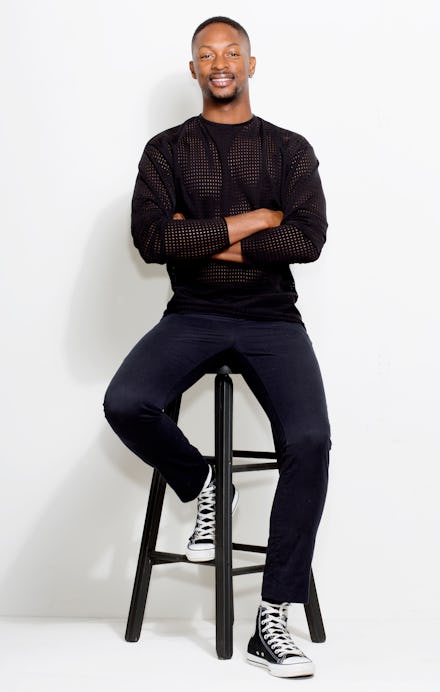Diversity on the runway is on the rise, but designers of color are still being ignored

This year's NYFW showed us that calls for diversity on the runway were heard. Kanye West's Yeezy Season 4 show featured hundreds of models of color; acid attack survivor Reshma Banoo Qureshi made her runway debut; Christian Siriano brought an array of plus-models into the fold; and Chromat, meanwhile, was a celebration of inclusivity featuring plus-size, disabled and transgender models without making any sort of fuss.
This is great, but dig deeper and you'll find a less often talked about reality — that of diversity behind the scenes.
Designer LaQuan Smith's presentation took place at Spring Studios, the same venue that housed Michael Kors and Lacoste's runways. The presentation featured his entire 24-piece collection and brought out the likes of Christina Milian, Karrueche Tran, Andreja Pejic and Cardi B. Yet Smith did not make the list. In fact, it's his sixth year showing at NYFW. So why is this 28-year-old designer seemingly ignored by an industry he unflinchingly occupies?
"The team at LaQuan did not confirm the final show time to be placed on the official schedule despite being approved," the Council for Fashion Designers of America said in a statement to Mic, noting that they had attended the show. "To be on the official schedule, designers need to demonstrate a real business with a point of view and have shown the collection before. Additionally, there is a required application process which goes under review and includes qualifying information such as range of active retail accounts, notable editorial coverage, and collection show history."
As Mic reported earlier this week, 46 of the designers of 150 official CFDA-sponsored brand shows and presentations at New York Fashion Week were of color, of which only eight were black. At its core, there are much deeper systemic issues that hold black designers back from being fully embraced by the fashion industry at large.
"Being a designer of color in this industry right now... it's difficult, I'm not going to lie to you," Smith said in an interview backstage. "And not just myself. I'm talking about amongst my peers as well. We're not presented the same opportunities.
It's not as though he doesn't have a following. Outside of NYFW, Smith has made a name for himself dressing some of the biggest names out there: Beyoncé Knowles, Kim Kardashian West, Rihanna, Kylie Jenner and Laverne Cox, just to name a few.
"At the end of the day, I think people just want beautiful clothes, but I do think that designers of color get a really bad rap and not as much respect — partially because they don't always have the things that people have, like easy access to finance and relationships," Brandice Henderson, founder of Harlem Fashion Row, said in a 2015 interview with the Cut, citing Smith as one of the designers she was most excited about. "When you don't have those things, it's very difficult to get attention in such a competitive industry."
Smith's vision is undeniable. Inspired by an electric storm, citing Lara Croft as one of his muses, his latest collection features lace with holographic dots, which, according to the young designer, reminded him of fish scales. There's a metallic pink slip dress with a long-sleeved shirred bodysuit, a white confetti lace-up catsuit and a red striped spaghetti jumpsuit with a black latex lace bomber.
"It's much more challenging, because when you do find someone like myself that is talented, the clothes are great, you have a great following, the celebrities are wearing it, it's kind of hard to figure out, 'well, if all of these great things are in place, how come we aren't sold in these type of stores or featured in these type of magazines.' I don't have an answer for it," Smith said.
"It is something I don't like to focus my energy on," he continued. "I'd much rather focus on what I do have, which is an e-commerce platform where I can do and sell at whatever price point I want. These are the things I can control. I do feel empowered as one of the few black designers who's actually getting some shine, but in other realms I struggle. It's hard."
Calling out an industry that's kept him largely on the outskirts while acknowledging the importance of his desired inclusion requires a delicate balance. Yet, if there's one clear takeaway from Smith's admission, it's an unrelenting hopefulness. After all, he may not be on the official list, but he is here.
"My advice to young kids of color that want to be in the industry: I think we need to stick together," he said. "It's a positive force; there's a very strong positive energy that's amongst NYC right now in terms of the unification of black people and we just need to be strategic about how we're presenting ourselves. There's a demographic for everyone and you just have to hone in on it."